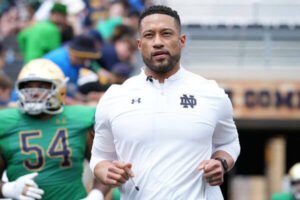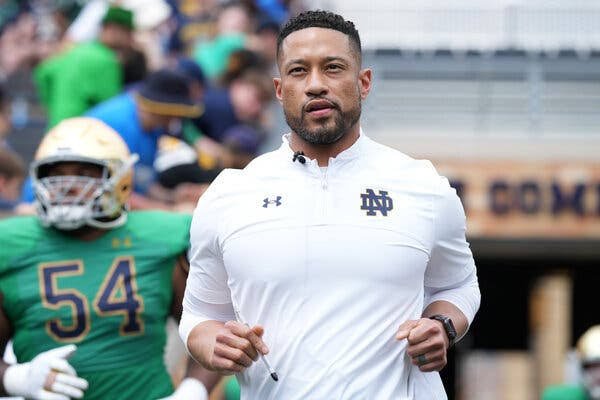The Notre Dame Fighting Irish head coach is entering a critical juncture in his tenure, as patience from fans, alumni, and the athletic department begins to thin. After back-to-back seasons that fell short of lofty expectations, optimism has been replaced with frustration, and questions now surround the program’s trajectory. The team’s much-anticipated debut in the SEC, a bold move aimed at elevating competition and exposure, instead turned into a stumbling block. Rather than establishing Notre Dame as an instant contender, the transition highlighted glaring weaknesses in both roster depth and consistency.

Despite these struggles, the school’s administration has shown a remarkable level of commitment by granting the coach a lucrative six-year, $51 million contract extension. The deal was intended as a vote of confidence, signaling that the leadership believed in his long-term vision. However, such an investment comes with immense pressure to deliver, and the margin for error has shrunk considerably. Every loss now carries more weight, with critics quick to point out that resources and facilities are no longer an excuse.
One of the most notable offseason moves was the hiring of former NFL executive Jim Nagy, a respected figure with a proven eye for talent evaluation. The expectation is that Nagy’s expertise will enhance recruiting strategies, player development, and NFL readiness among prospects—a critical factor in attracting elite high school athletes. While the addition has been met with cautious optimism, results on the field will ultimately determine whether this shift in the program’s structure can produce tangible improvements.

The recruiting trail has already shown signs of life, with several promising commitments from highly ranked prospects. However, the challenge lies in translating recruiting wins into on-field success. Notre Dame’s offensive struggles, inconsistent quarterback play, and defensive breakdowns have been recurring themes that must be addressed if the program hopes to compete at the highest level of the SEC. The conference is unforgiving, and even incremental progress can be overshadowed by a single disappointing Saturday.
For the fan base, the frustration is compounded by Notre Dame’s storied history and tradition of excellence. Anything short of national relevance is perceived as falling below the standard, and the current trajectory risks alienating supporters who expect the program to be in championship conversations annually. Alumni, donors, and boosters—vital pillars of the program’s financial health—are watching closely, and their continued backing hinges on a clear sense of forward momentum.

As the new season approaches, the head coach finds himself at a crossroads. The combination of a massive contract, a high-profile staff addition, and the demands of SEC competition has created a season of immense consequence. A strong start could silence critics and reignite belief in his vision, while another year of mediocrity may force Notre Dame to consider a costly but necessary change in leadership. In the unforgiving world of college football, reputation and results are intertwined, and the next few months may define the coach’s legacy.
